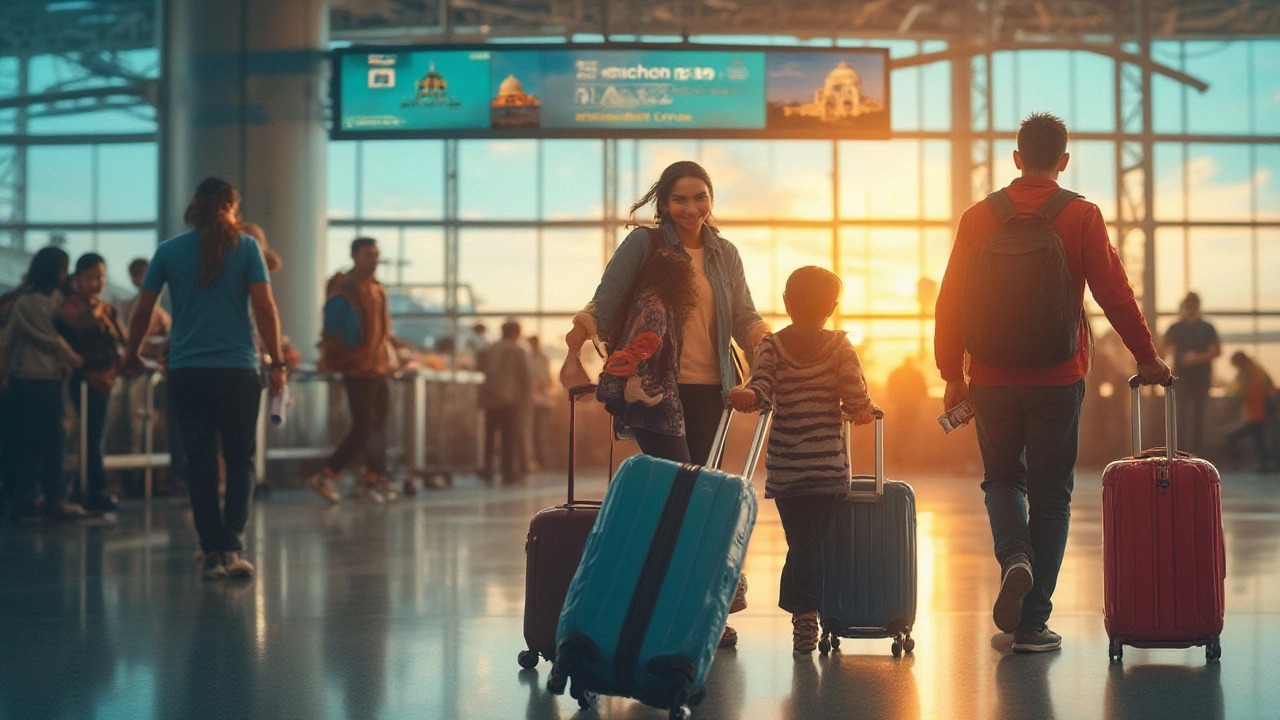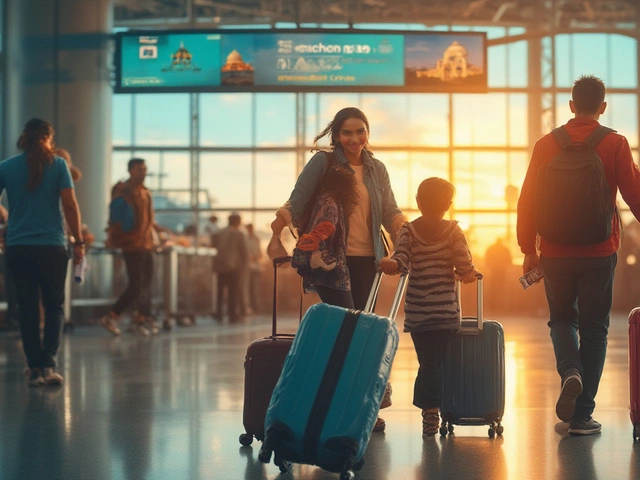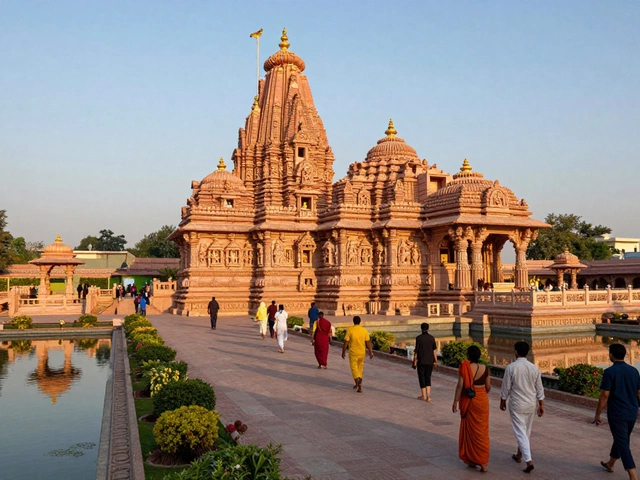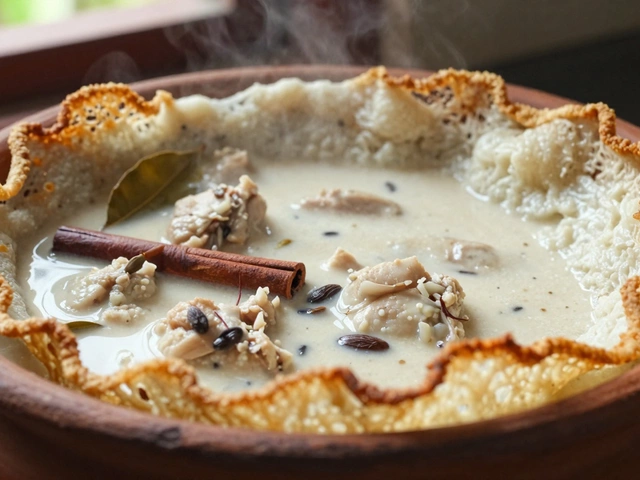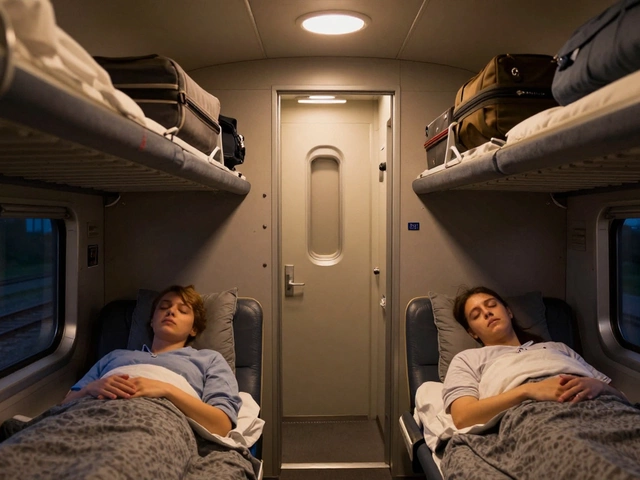If your Instagram feed is full of dreamy Taj Mahal shots and bustling spice markets, and you’re thinking, “Can I actually afford that?” — well, you’re not alone. The idea that India is dirt cheap pops up everywhere, but the reality? It’s more complicated than a single price tag. Some things will make your wallet cheer while others will surprise you. And if you want all the small tricks to dodge tourist traps and live large on a modest budget, you’ve landed in the right spot.
What Makes India Seem So Affordable?
For US travelers, one of the first shocks when landing in India is the conversion rate. As of summer 2025, one US dollar gets you around 83 Indian rupees. That means your morning latte at home may cost more than an entire lunch in Mumbai—seriously. But it’s not just the numbers, it’s the whole vibe. Street food for under a dollar. Taxis that feel almost free (as long as you can haggle a little). Colorful markets packed with handmade clothes at the cost of a fancy coffee back home.
Why is this? India’s average wage and cost of living are lower than cities like New York, LA, or even Tulsa. A middle-class Indian family can rent a modern two-bedroom apartment in a big city for half or a quarter of what you’d pay for a studio in the US. Utilities, transportation, and food, especially when bought locally or from street vendors, are affordable for tourists.
Check out this quick table for a real sense of what your dollars can do:
| Item | Avg Price (USD) | Avg Price (INR) |
|---|---|---|
| Street food snack | $0.40 | 33 |
| 3-star hotel (per night) | $22 | 1,800 |
| Air-conditioned cab (5km ride) | $2.50 | 210 |
| Domestic flight Mumbai-Delhi | $60 | 4,980 |
| 15-minute spa foot massage | $6 | 500 |
| Train ticket (Sleeper Class, 100 miles) | $2 | 166 |
The flip side? Imported stuff and Western comforts cost almost the same as home (sometimes even more due to import taxes). Think Starbucks, Levi’s, fancy supermarkets, or bottles of California wine. So, blend into the local scene if you want to stretch your travel budget.
What Costs Can Catch You Off Guard?
It’s easy to dream about dollar-a-day travel, but reality sometimes bites. Hotels targeting only foreigners can double or triple prices because they know what you’re used to back home. Tour companies may have a “foreign price” and a “local price” — and it’s not hard to guess which one you’ll see first! Some popular attractions (like the Taj Mahal) have a two-tier ticket system: for example, as of 2025, locals pay about 50 rupees to enter the Taj, while foreigners fork out 1,100 rupees — over 20 times higher.
Here’s another head-spinner: big hotels and restaurants often add taxes and service charges, which can total 18% or more. So, that lavish thali you’re eyeing on the menu isn’t fooling around—always check your bill before you start devouring. Airport transfers and city taxis booked through your hotel may look wildly expensive compared to the price you’d pay booking directly or using apps like Ola or Uber. And if you love boutique shopping, don’t expect “Indian prices” at hotel lobbies or touristy market stalls. Bargaining is expected, so brush up on your negotiation skills.
Health care is a mixed bag: basic medicines are cheap, but if you need a Western-standard private doctor, expect fees not too different from a walk-in clinic in the US. Plus, many US health insurance plans don’t cover you in India, so travel insurance is a must.
- Traveling during festivals or peak wedding season? Prices for rooms and trains can double quickly.
- Luxury trains or private guided tours cost a lot more than regular train tickets or solo sightseeing.
- Western fast food: Craving a Big Mac? That’ll actually cost more than the same burger in Kansas.
You’ll find the biggest deals living like a local, not like a tourist. Choose local restaurants, ride in rickshaws (and agree on the price before you hop in), and buy souvenirs where you see everyday Indians shopping too.

Everyday Tips to Stretch Your Dollars
Want the real scoop? Here’s what travelers do to make the most of their budget:
- Eat local. Skip air-conditioned Western-style bistros and grab a thali (mixed Indian meal) at a small family-run spot. Not only will the flavors change your life, but your wallet will thank you—often under $2 for a filling, spicy lunch.
- Use train and bus networks. India has one of the world’s largest railway systems, and sleeper class tickets on long routes can be as low as $3–$8 between cities.
- Apps like OYO, MakeMyTrip, and Hostelworld unlock cool budget rooms—search for "non-tourist" neighborhoods.
- Bargain, gently. At street markets and with rickshaw drivers, it’s part of the culture. Smile, offer about half the first price, and settle somewhere between.
- Buy a local SIM card at the airport. For about $6, you can get enough data to stay connected all trip, and it’s way cheaper than US roaming charges.
- Treat yourself to chai. Street vendors sell hot, spiced tea for as little as 10 cents—a true slice of daily India.
- Consider traveling off-season (April–June or September). Not only is it quieter at big monuments and national parks, but you’ll score the best deals on hotels and tours.
- Don’t ignore local brands. Indian-made clothes, shoes, and even cosmetics are surprisingly good quality and a steal compared to their imported cousins.
Some of the biggest travelers’ regrets involve small daily mistakes that added up: tipping too much, always taking a private car instead of rickshaws, or shopping only where guides take them. Watching what locals do, blending in, and being open to the unexpected lead to both savings and better stories.
The Real Take: Is India Really Cheap for US Citizens?
So, is India cheap for US citizens? If your dream trip involves local snacks, train adventures, and watching cricket with college kids, the answer is a full-throated YES. India can be wildly affordable, especially compared to US travel. Whether you’re backpacking for months or splurging on a once-in-a-lifetime journey, your dollars will likely go far—sometimes shockingly far.
But if you stick to only imported foods, chain hotels, and private transportation, you’ll burn through cash almost as quickly as you would in any major US city. India rewards curiosity. The real bargains happen the minute you step off the tourist track—eat dosas roadside, take local buses, and book a village homestay instead of a five-star chain.
Curious about specifics? A savvy traveler can get by on $25–$50 a day, all in: rooms, food, travel, museums, and modest shopping. Splash out on a few luxury nights and you’ll still be under US city hotel prices. Street vendors offer shoes for $8, T-shirts for $3, and handmade jewelry for less than lunch back home. Spa experiences and yoga classes cost a fraction of global rates—think $15 for 90 minutes of bliss. Pack light, wear your best smile, and be open to the swirl of sounds, scents, and sights that only a place like India delivers.
One last tip: keep some small bills on hand for rickshaws, snacks, street tips, and markets. And never, ever pay in dollars—rupees always get you the best deal. India isn’t just “cheap”—it’s an explosion of color where your travel dollars open up worlds you never imagined. Enjoy the chaos, embrace the crowds, and let India surprise you at every turn.
